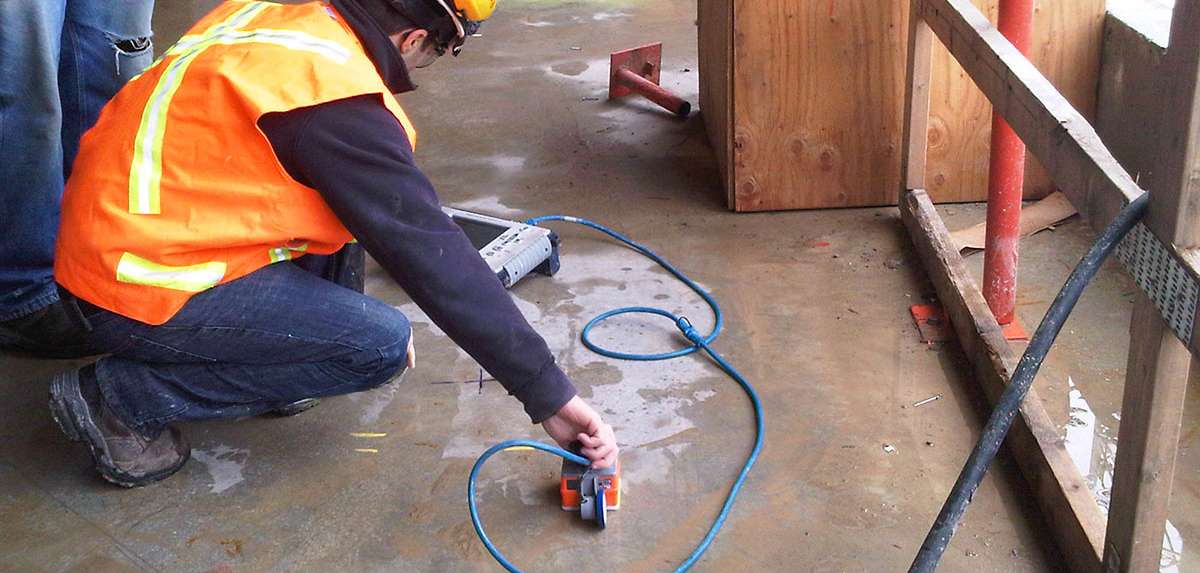RainierGPR Concrete Scanning Demystified: Whatever You Need to Know
RainierGPR Concrete Scanning Demystified: Whatever You Need to Know
Blog Article
Discovering the Midst: A Comprehensive Guide to Concrete Scanning and Its Diverse Applications
In the realm of building and construction and infrastructure development, the precise process of concrete scanning holds a critical duty in making certain the structural stability and safety and security of jobs. As innovation remains to advance, the applications of concrete scanning have expanded far beyond plain surface-level analyses. From finding rebar and post-tension cables to mapping out avenues and gaps concealed within concrete frameworks, the abilities of modern-day scanning methods are both vital and remarkable. Nevertheless, real deepness of concrete scanning's prospective reaches also better, branching right into unexpected markets and sparking ingenious services. The interconnected internet of opportunities that concrete scanning offers is not only interesting but additionally essential for the improvement of various industries.
Value of Concrete Scanning
Recognizing the significance of concrete scanning is essential in ensuring the safety and stability of frameworks throughout building and improvement jobs. Concrete scanning uses innovative technologies such as ground-penetrating radar (GPR) and electromagnetic induction to detect ingrained objects, gaps, or various other anomalies within concrete structures.
In addition, concrete scanning plays a critical role in making certain conformity with building ordinance and regulations that mandate the protection of existing architectural parts throughout building and construction activities. By properly mapping out the interior composition of concrete, scanning technologies make it possible for construction professionals to make enlightened decisions that promote the structural stability and durability of buildings and framework jobs. Essentially, the relevance of concrete scanning depends on its capacity to protect both the architectural integrity and the workers associated with construction endeavors.
Technologies Made Use Of in Concrete Scanning
Concrete scanning counts on innovative technologies such as ground-penetrating radar (GPR) and electro-magnetic induction to accurately discover ingrained items and anomalies within concrete frameworks. Ground-penetrating radar runs by releasing high-frequency electro-magnetic waves right into the concrete.
Electromagnetic induction, on the other hand, functions by creating electromagnetic fields around a concrete structure via a transmitter coil. When metal things are present within the concrete, they interfere with these electromagnetic fields, creating eddy currents to move through the steel. By gauging the adjustments in the magnetic fields with a receiver coil, the system can pinpoint the area of metal things in the concrete.
These sophisticated innovations play an essential role in non-destructive testing, making certain the security and stability of concrete frameworks in various industries.
Applications in Construction Market
Within the building market, concrete scanning technology discovers varied applications look what i found that boost task efficiency and safety. Additionally, concrete scanning is made use of for finding gaps, such as air pockets or areas of degeneration within concrete, which can compromise the overall stamina of a structure. Concrete scanning plays a vital duty in high quality control by validating the density of concrete covers over reinforcement, making certain compliance with design specifications and requirements.

Safety And Security Advantages of Concrete Scanning
In the realm of building and construction safety and security, the execution of concrete scanning technology provides a vital advantage in preemptively identifying prospective threats and strengthening structural stability. By using advanced scanning methods such as ground-penetrating radar (GPR) and electro-magnetic induction, construction groups can accurately find rebar, post-tension wires, conduits, and other surprise things within concrete structures. This proactive method substantially decreases the risk of unintended strikes during drilling, reducing, or coring activities, consequently avoiding expensive problems, injuries, and project delays.
In addition, concrete scanning enhances worker safety by supplying real-time details about the structural condition of concrete elements. By resolving possible safety worries without delay, concrete scanning contributes to creating a protected working environment and mitigating the likelihood of architectural failures or accidents on construction sites.
Future Trends in Concrete Scanning
Emerging improvements in scanning modern technology are poised to revolutionize the area of concrete examination and browse around here evaluation. One significant fad that is getting grip is the combination of expert system (AI) and artificial intelligence formulas into concrete scanning devices. By utilizing the power of AI, these systems can evaluate vast quantities of data gathered throughout scanning processes to give more comprehensive and precise insights right into the condition of concrete structures. This can aid in finding hidden defects, forecasting potential structural failures, and even recommending maintenance strategies.
One more considerable pattern is the growth of more easy to use and portable scanning devices. Miniaturization look at more info of scanning devices enables much easier accessibility to restricted areas and remote locations, making evaluations a lot more efficient and extensive. Furthermore, advancements in cordless communication technologies enable real-time information transfer and analysis, helping with quicker decision-making procedures.
Additionally, there is a growing focus on sustainability in concrete scanning innovations - RainierGPR Concrete Scanning. Producers are significantly integrating eco-friendly products and energy-efficient functions into their tools to lower ecological influence. These future trends are readied to improve the efficiency, precision, and sustainability of concrete scanning practices, shaping the sector's future landscape
Verdict
In verdict, concrete scanning plays an essential duty in the building and construction sector by guaranteeing the security and effectiveness of different tasks. As modern technology advancements, the future of concrete scanning holds appealing advancements for boosting building processes.

Report this page